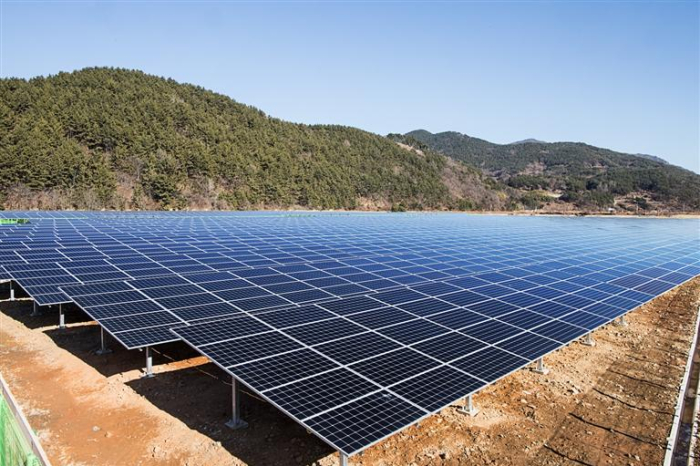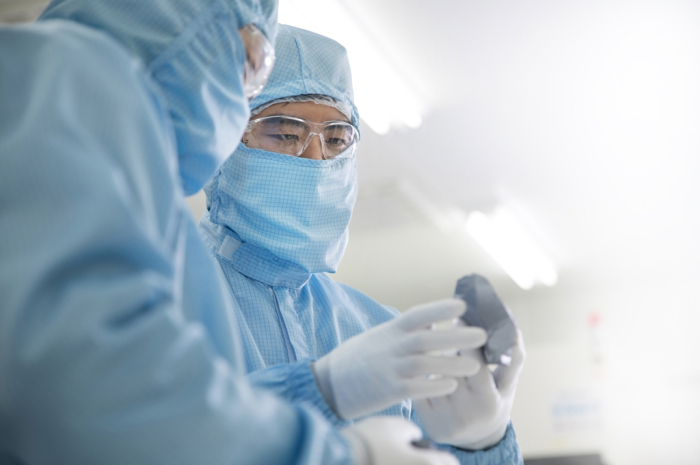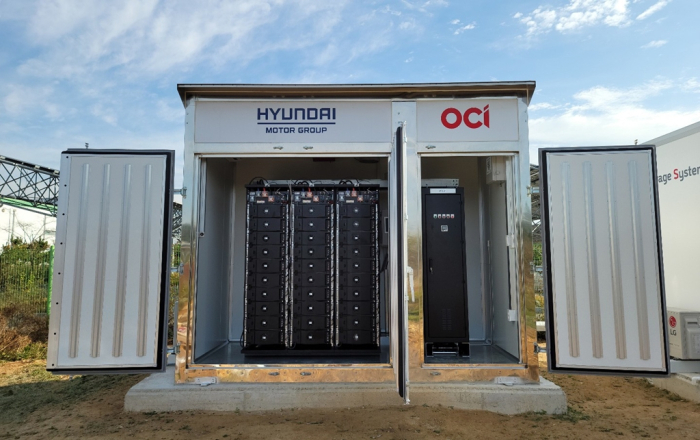Solar cell materials
Korea’s OCI to return to highest profit in decade on rising polysilicon prices
The company’s bio and property development businesses are also expected to boost profits
By May 30, 2021 (Gmt+09:00)
4
Min read
Most Read
LG Chem to sell water filter business to Glenwood PE for $692 million


KT&G eyes overseas M&A after rejecting activist fund's offer


Mirae Asset to be named Korea Post’s core real estate fund operator


StockX in merger talks with Naver’s online reseller Kream


Meritz backs half of ex-manager’s $210 mn hedge fund



OCI Co., a South Korean chemical and green energy company, has been in the red for years, weighed by weak prices of its mainstay product polysilicon, a raw material used to make photovoltaic cells for solar panels.
A global supply glut was the main cause for polysilicon’s depressed prices, forcing some manufacturers to go out of business. However, demand for the material is rising significantly on the back of the global push for carbon neutrality and the pursuit of renewable energy.
The US administration’s solar power ambitions are also driving up prices of related raw materials, boding well for companies like OCI.
OCI, the only polysilicon maker in Korea, is widely expected to turn to profit this year from years of losses, with some analysts predicting the company’s 2021 operating profit above 300 billion won ($269 million), the largest in a decade.
According to the solar industry on May 30, the price of solar polysilicon has risen to $25.41 per kilogram, up 43% from $17.72 at the end of April. Its price has steadily increased from less than $10 at the end of 2020 to $15 in March and above $20 in April, bringing its year-to-date percentage gains to 171.7%.
Analysts attribute decent price gains to renewed construction of solar power generation facilities that had been put on hold during the pandemic.
The global photovoltaic capacity is forecast to grow to 170 gigawatts (GW) this year, up 21% from 140 GW in 2020.
DEMAND OUTPACES SUPPLY
However, demand is outpacing supply as most polysilicon manufacturers are still reluctant to aggressively expand production facilities.
“When the price of polysilicon plummeted to as low as $6 per kilo last year from a high of $400 in 2008, many companies gave up the business or drastically cut down production volumes. There won’t be a significant facility ramp-up even if prices rise from the current level,” said an industry official.
OCI’s polysilicon business is also expected to gain a tailwind from President Joe Biden’s plans to cut climate-changing carbon emissions by promoting solar and other renewable energy, analysts said.

Another piece of good news for OCI, they said, is that the US government may impose sanctions such as a trade ban on polysilicon supplied from Xinjiang, China over accusations of forced labor and other abuses in the region.
The global polysilicon industry gets about 45% of its supply from Xinjiang, the northwestern region where China’s ruling Communist Party is accused of mass incarceration of minorities and other abuses.
ALTERNATIVE SUPPLIER ON XINJIANG ISSUE
Industry officials said non-Chinese companies including OCI could benefit if the US government takes any action against the raw material produced from Xinjiang.
OCI’s profitability is already improving, boosted by the rising prices of polysilicon.
In the first quarter of this year, the company posted an operating profit of 32 billion won, a turnaround from a loss of 92 billion won in the year-earlier period.
Industry officials estimate about $8 per kilogram as the break-even point for OCI’s polysilicon business. If the price goes beyond $20, the company is said to gain a profit margin of at least 30%.
The rising polysilicon price will likely be reflected in OCI’s earnings more significantly from the second quarter as the company largely supplies the raw material to companies such as LONGi Green Energy Technology Co. (LONGi Solar) in China under a long-term contract.
Meritz Securities and several other domestic brokerages expect OCI to post more than 300 billion won in operating profit this year, the highest since 2011.
Buoyed by the growing demand, OCI plans to expand its capacity in Malaysia and relocate Korean facilities to the Southeast Asian nation to cut production costs.
The company is currently expanding the Malaysian plant’s capacity by 5,000 tons to 35,000 tons a year and an additional expansion of up to 60,000 tons is also under consideration depending on market conditions, according to an OCI official.

STRENGTHENING BIO, PROPERTY BUSINESSES
Analysts said OCI is also making money from its real estate development business.
The company is currently building a town surrounding its plant in Incheon, west of Seoul, to develop the area into a commercial and residential zone.
According to the property industry, its Incheon plant has a book value of 1.1 trillion won, and the company is expected to log up to 2.7 trillion won in gains from the development of the area over the next six to seven years.
With proceeds from the real estate development, OCI is expected to increase investment in growth businesses, including biotechnology.
As part of efforts to enhance its presence in the bio industry, the company has invested in several bio companies since 2019, including SN BioScience, a Korean pancreatic cancer drug maker; Nucleix, an Israeli biotech firm that makes early-stage cancer detection kits; US-based Adicet Bio, a Nasdaq-listed pre-clinical stage biotech company; and Panolos Bioscience, a Korean biotech venture that develops anti-cancer therapeutics.
Write to Jae-Kwang Ahn at ahnjk@hankyung.com
In-Soo Nam edited this article.
More to Read
-
 Renewable energyTotal, Hanwha to set up JV for $1.8 bn US solar expansion
Renewable energyTotal, Hanwha to set up JV for $1.8 bn US solar expansionJan 15, 2021 (Gmt+09:00)
2 Min read -
 Hanwha Q CELLS secures 315MW solar power, energy storage project in Portugal
Hanwha Q CELLS secures 315MW solar power, energy storage project in PortugalAug 28, 2020 (Gmt+09:00)
1 Min read
Comment 0
LOG IN


